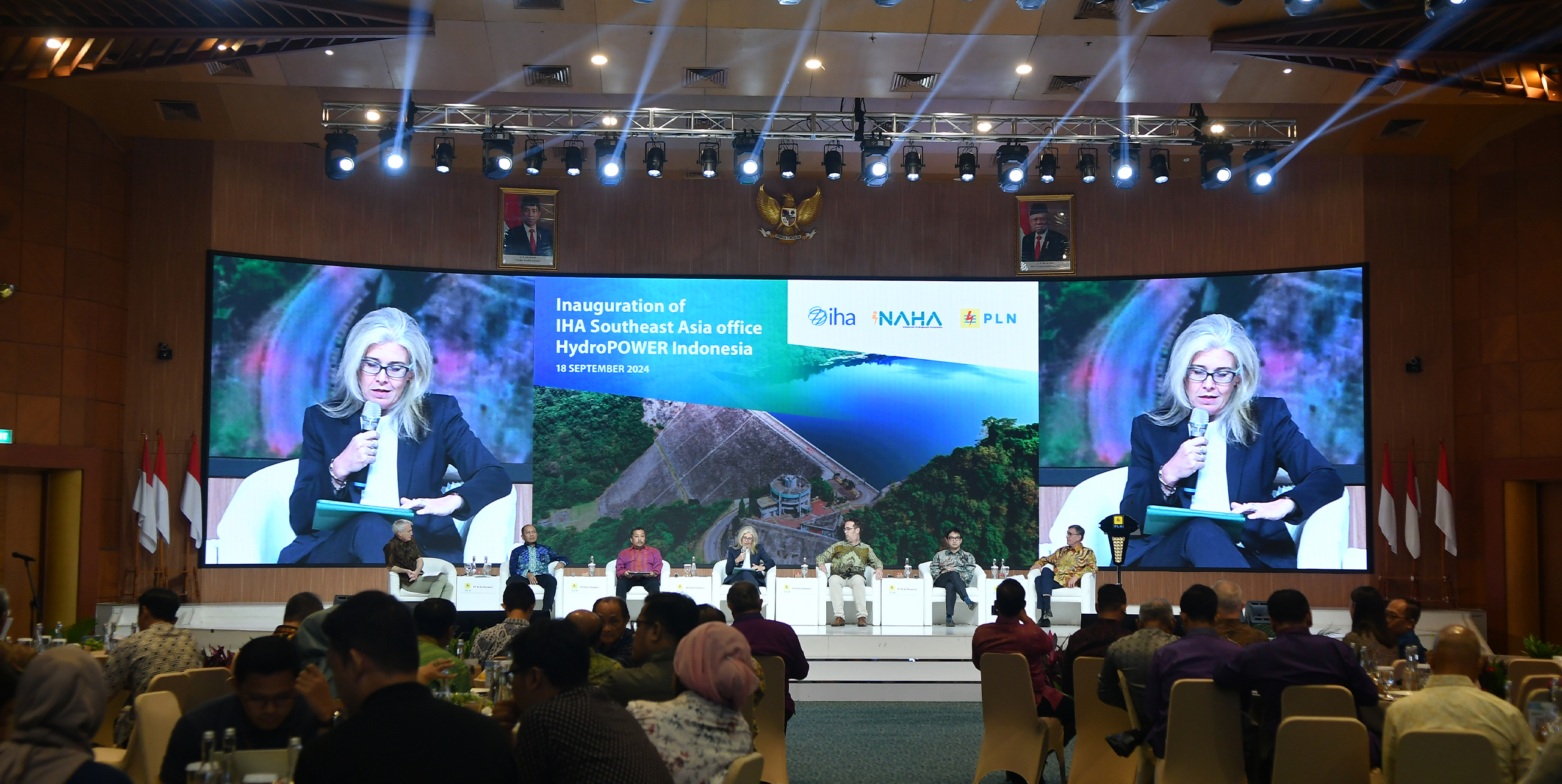
Key Insights from the Panel Discussion
While the region has made progress, adding 1.6 GW of hydropower capacity in 2023, there remains significant untapped potential. Hydropower and pumped storage can play a much larger role in stabilising the ASEAN grid, especially as countries work to meet growing energy demands while reducing reliance on fossil fuels.
In my remarks, I highlighted four key trends driving hydropower development in the region:
- Complementarity with Renewables: Pumped storage is increasingly vital to support the integration of renewable energy sources. By providing a reliable 24-hour energy supply, it complements the intermittent nature of solar and wind power, ensuring a stable and flexible energy mix.
- Grid Interconnectivity: Growing interconnections of power grids within and between countries enable more strategic placement of power generation facilities. This facilitates the efficient transfer of energy across borders, helping meet electricity demand in urban centers while reducing reliance on fossil-fuel-based power.
- Green Industrial Parks: Governments across ASEAN are promoting the development of green industrial parks, which rely on sustainable energy sources to fuel economic growth. Hydropower is poised to play a key role in powering these industrial zones, contributing to job creation and national prosperity while advancing decarbonisation goals.
- Hydropower Sustainability Standard: The Hydropower Sustainability Standard offers a framework for assessing hydropower projects against ESG commitments, giving financiers a tool to evaluate the environmental and social impacts of potential investments. This standard ensures that hydropower development aligns with global sustainability goals, fostering responsible growth in the sector.
Accelerating the Transition to Sustainable Energy
The inauguration of the IHA Southeast Asia Office marked a pivotal moment for the hydropower sector in the region, with leaders acknowledging the critical role hydropower, including pumped storage, can play in achieving its long-term energy and climate goals. The panel discussion underscored the importance of adopting forward-looking policies, strengthening regional cooperation and investing in innovative technologies to unlock hydropower’s full potential.
Through my participation, I reaffirmed SMEC’s commitment to driving sustainable hydropower development across ASEAN. As a global leader in hydropower consultancy, SMEC is well-positioned to support the region’s energy transition through technical expertise, sustainable project delivery and a focus on long-term environmental and social impacts.
As Southeast Asia strives to meet its growing energy demands while addressing climate change, hydropower stands as a key enabler of the transition to a clean, resilient and reliable energy future. With more than 80 GW of untapped hydropower potential, the region has a unique opportunity to harness this renewable resource to power sustainable development in the decades ahead.









 Engineering positive change: delivering community-centric infrastructure in rural Africa
Engineering positive change: delivering community-centric infrastructure in rural Africa
Across the vast and diverse landscapes of rural Africa, many communities face significant barriers to accessing essential infrastructure. Limited access to clean water, sanitation, reliable transportation, and consistent energy supply impedes daily life, and deepens existing inequalities.
 A Sustainable Approach to Reservoir Management: Advanced Sediment Yield Forecasting Using SWAT
A Sustainable Approach to Reservoir Management: Advanced Sediment Yield Forecasting Using SWAT
Reservoir sedimentation is a growing concern for water resource managers and hydropower projects, as it diminishes water storage capacity, affects water quality and poses long-term challenges for operational efficiency.
 Building Partnerships for Sustainable Growth in the Solomon Islands
Building Partnerships for Sustainable Growth in the Solomon Islands
The Solomon Islands, an archipelago of nearly 1,000 islands, is emerging as a promising destination for investment in the Pacific.
 Hydropower in ASEAN: A Growing Force in the Energy Mix
Hydropower in ASEAN: A Growing Force in the Energy Mix
Southeast Asia is poised for a hydropower transformation, with countries committing to significant capacity increases. According to the 2024 World Hydropower Outlook, Indonesia plans to expand its hydropower capacity from 6.7 GW to 72 GW by 2070.




